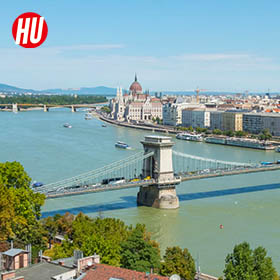
Lisbon, the capital of Portugal, has experienced the glory of the Age of Discovery, and recovered from the deadly earthquake. The World Heritage Site of Belém, the Commerce Square and Augusta Street are all witnesses to the history of Lisbon, one of the oldest cities in the world.
Historic Belém
In the 15th and 16th centuries, Portugal entered its golden age. Under the leadership of Prince Henry the Navigator and Vasco da Gama, the Portuguese sphere of influence rapidly expanded across the globe. The Belém Tower and the Jerónimos Monastery, in the Belém district of Lisbon, are witnesses to the Age of Discovery, and were inscribed on the World Heritage List in 1983. The 56-meter-high Monument of the Discoveries (Padrão dos Descobrimentos) is carved with 33 historical figures, including Vasco da Gama, Ferdinand Magellan and other navigators.

Belem Tower
The Castle by the Sea, Symbol of Lisbon
Located on the riverbank in Lisbon's Belém district, the Belém Tower is a defensive fortress built in 1514 and used to guard the nearby waters. The Belém Tower, a representative of Manueline architecture, was inscribed on the World Heritage List in 1983 and is regarded as a symbol of Lisbon.

Jeronimos Monastery
The 300-meter Long Facade
The Jerónimos Monastery, a landmark of the Belém district of Lisbon, is more than 500 years old and was listed as a World Heritage Site in 1983. Jerónimos Monastery is worth a visit, with its ornately carved church building, cloistered gardens, and the archaeological museum inside.

Monument Of The Discoveries
A Tribute to the Glorious Exploration
Facing the mouth of the Tagus River in Lisbon, the 56-meter-high sail-shaped Monument of the Discoveries is carved with 33 Portuguese greats, including Vasco da Gama, to commemorate the golden years of the Age of Discovery. The ground of the square in front of the monument is decorated with a giant mosaic compass pattern.
Recovering from the Earthquake
In 1755, a sudden earthquake devoured 85% of Lisbon’s buildings and a third of its population. Few architectures survived, the Lisbon Cathedral was one of them. The buildings near Augusta Street (Rua Augusta), one of Lisbon’s most famous business districts, were built after the earthquake and were the first earthquake-resistant buildings in Europe.

Rua Augusta And Arco da Rua Augusta
Lisbon's City Center
The Augusta Street (Rua Augusta), 500 meters long, connects the Rossio Square with the Commerce Square, and intertwines with more than a dozen surrounding streets to form Lisbon's busiest commercial district. At the south end of the street is the Rua Augusta Arch, which is a landmark of Lisbon with its beautiful carvings and decorations.

Lisbon Commerce Square
Seaside City Square
Commerce Square, adjacent to the mouth of the Tagus River in Lisbon, has a statue of King José I on horseback in the center, with a view of the April 25 Bridge and the statue of the Christ the Redeemer across the sea. Walking through the Rua Augusta Arch in the north of the square, you will reach the most bustling commercial zone of Lisbon.

Lisbon Cathedral
Seat of the Patriarchate
The Lisbon Cathedral is located halfway up the hill in the Alfama district, and was built in 1147 in a mixture of styles. As the seat of the Patriarchate of Lisbon, the church houses the Pope's throne, the Patriarch's robes, tiaras, statues, and many religious relics.
Observation Decks in Lisbon
Lisbon is a hilly city, with streets that rise and fall dramatically. In the center of the city, as well as on the higher ground to the east and west, there are many observation decks with excellent views, such as the Santa Justa Lift (Elevador de Santa Justa) Viewing Platform downtown, the Sao Jorge Castle (Castelo de São Jorge), which is the highest in the city, and the Miradouro de Santa Luzia, which faces the sea. You can always take a scenic tram ride to the sights and observatories in Lisbon.

Castelo de S. Jorge
City Hilltop Fortress
The São Jorge Castle is the highest point in Lisbon, with an excellent view on the nearby observation deck. Built by the Moors in the Middle Ages, the São Jorge Castle still has 11 remaining towers. An exhibition of excavated artifacts and historical relics from different eras provides an insight into the life of the local people.

Trams In Lisbon
Railcars and Lifts Across the Hilly City
Yellow or red trams can always be seen on the streets of Lisbon, represented by route 28, which passes through countless attractions and landmarks, and route 15, which connects the city with the district of Belém.

Santa Justa Lift
120 Year Old Urban Elevator
The Santa Justa Lift is a famous tourist facility in Lisbon, Portugal, located on the south side of the Rossio Square. The lift operates vertically and has two cabins. At the top of the lift is an open-air platform nearly 50 meters high, offering a panoramic view of Lisbon.

Miradouro de Santa Luzia
Elegant Garden with Tile Paintings
Not far from the Tagus River, the Miradouro de Santa Luzia has an elegant garden and is one of Lisbon's most beautiful viewpoints. It offers a view of the water and the connecting red roofs, and the walls are decorated with blue tile paintings on a white background with a typical Portuguese artistic flavor.

Miradouro da Senhora do Monte
Overlooking Lisbon
Miradouro da Senhora do Monte (Our Lady of the Hill Viewpoint) is named after the nearby chapel of Our Lady of the hill, which is a well-known viewpoint in Lisbon. With a 270-degree view of Castelo de São Jorge on the opposite side of the hill, it is a place where you can experience the feeling of being at the top of Lisbon.

































